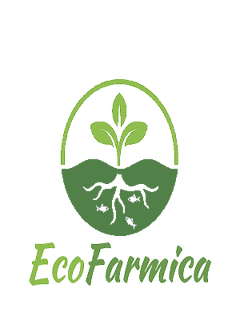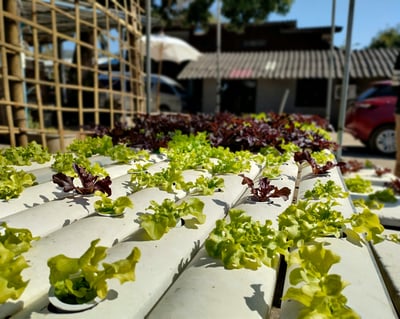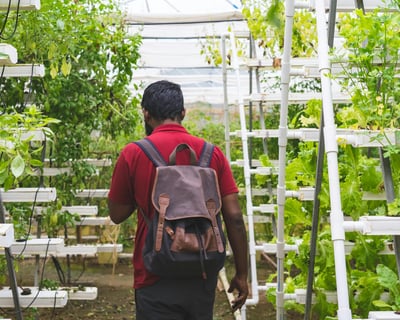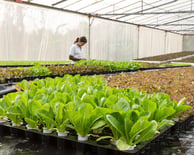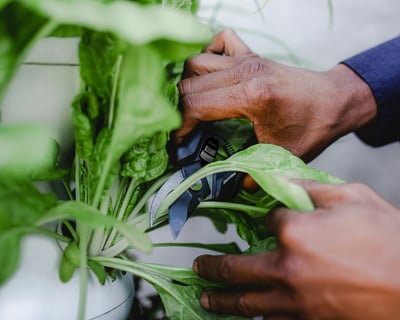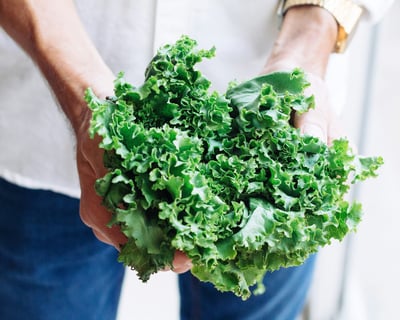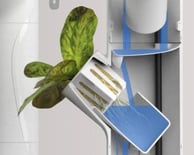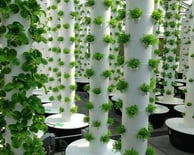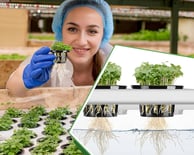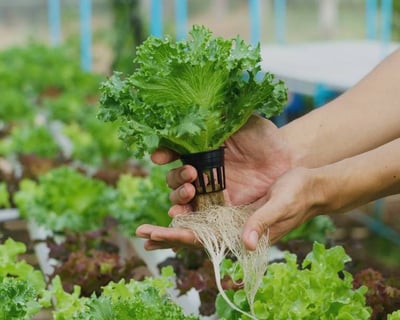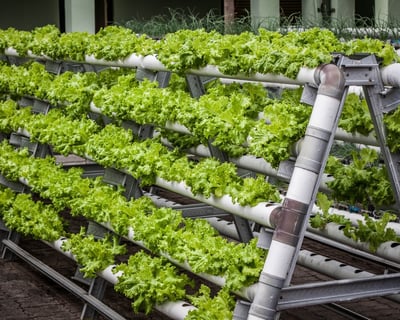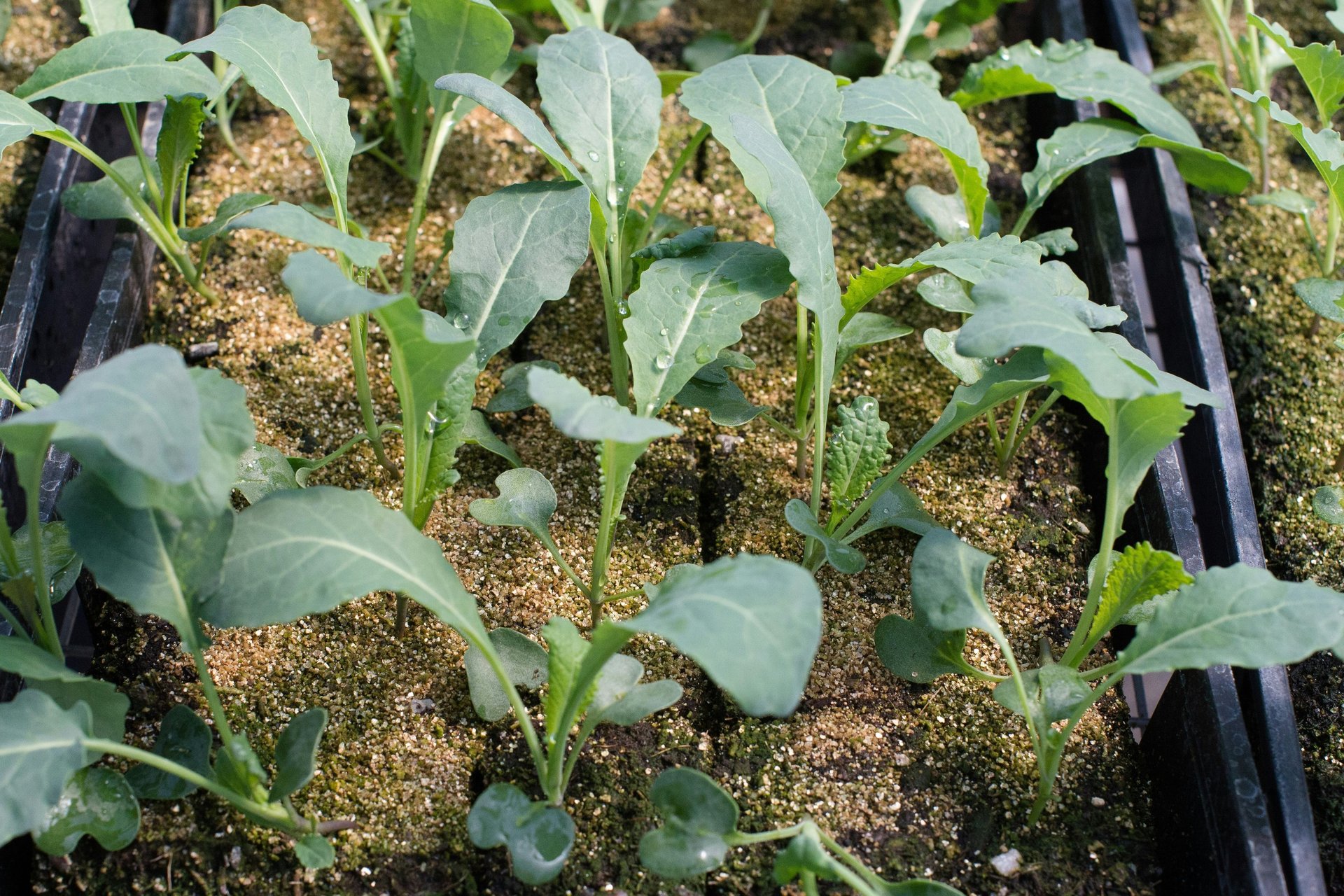
Soil Problems? Hydroponics is the Answer!
Comparing Organic & Inorganic Soil Alternatives for Thriving Urban Gardens
Baraq
2/1/202513 min read
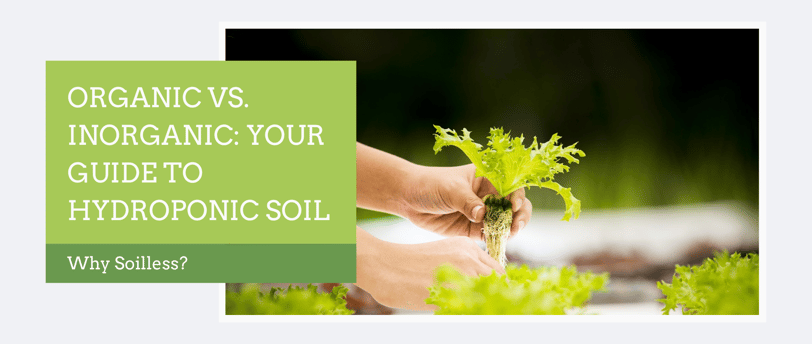

Why Soilless? A Beginner's Guide to Hydroponics.
In recent years, the world of gardening and agriculture has witnessed a remarkable shift towards innovative growing methods, with hydroponics taking center stage. As more enthusiasts and farmers seek sustainable and efficient ways to cultivate plants, soil alternatives have emerged as a vital solution for those looking to grow without the limitations and challenges of traditional soil gardening.
Whether you’re an urban gardener with limited space, an eco-conscious individual aiming to reduce your environmental footprint, or simply curious about new planting techniques, understanding the various hydroponics soil alternatives can open the door to a thriving, soilless garden.
In this guide, we will explore the diverse options available for hydroponic systems and how they can help you achieve success in your growing endeavors while maximizing plant health and yield.
Understanding Hydroponic Gardening: The Basics
Hydroponic gardening has gained significant popularity in recent years, offering an innovative way to cultivate plants without the traditional use of soil. This method involves growing plants in nutrient-rich water, allowing for greater control over the growing environment and improved efficiency. By eliminating soil, hydroponics facilitates a clean and controlled space where plants can thrive. This approach not only saves on space but also uses less water compared to conventional gardening, making it an appealing option for urban gardeners looking to maximize yield in limited spaces.
One of the primary advantages of hydroponics is the variety of soil alternatives that can be used to provide support for the plants while allowing the roots to access necessary nutrients. Common media include rock wool, clay pellets, and coconut coir, each offering unique properties. These alternatives help maintain moisture levels and aeration while providing a stable foundation for a diverse range of plants. Hydroponic systems can also be tailored to suit specific types of crops, enabling gardeners to optimize their setup based on the plants they wish to grow.
Hydroponics also allows for year-round cultivation, providing the opportunity to grow fresh produce regardless of seasonal constraints. This opens the door for a continuous supply of fruits, vegetables, and herbs, aligning perfectly with the rising trend of locally sourced and sustainably grown food. Another key benefit is the reduction of pests and diseases typically associated with soil-based cultivation, as the controlled environment of a hydroponic system limits the variables that lead to such issues.
Overall, understanding the basics of hydroponic gardening can be the first step toward embracing this sustainable, efficient approach to growing plants. Whether you're a seasoned gardener or a curious beginner, exploring the possibilities of hydroponics and its soil alternatives can lead to a rewarding gardening experience, potentially transforming how you view food production in both suburban and urban settings.
Exploring Different Hydroponic Systems
Hydroponics has emerged as a revolutionary method of growing crops without the use of traditional soil, leveraging nutrient-rich water solutions to feed plants directly. This innovative technique opens up a world of possibilities for agriculture, especially in urban environments where arable land is limited. By exploring various hydroponic systems, from nutrient film technique (NFT - Nutrient-rich water flows through shallow channels, feeding plant roots.) to deep water culture (DWC - where plant roots are fully submerged in a nutrient-rich, oxygenated water solution - simplify), growers can choose the best method tailored to their specific needs and space constraints. Hydroponics not only maximizes crop yield and growth rates but also minimizes the risk of soil-borne pests and diseases, creating a cleaner growing environment.
One of the most popular hydroponic systems is the aeroponic system, where plants are suspended in air and misted with nutrient solutions. This allows for high levels of oxygen exposure to the roots, promoting rapid growth. Vertical farming using hydroponics has gained traction as it utilizes vertical space, enabling urban farmers to increase production without expanding their footprint. These systems often integrate artificial lighting, allowing for year-round cultivation regardless of outdoor conditions. As such, hydroponics has become a viable solution to address food security in densely populated areas.
While traditional hydroponics relies heavily on equipment and technology, the exploration of soil alternatives continues to evolve. Some growers are experimenting with organic mediums, such as coconut coir and peat moss, which support plant growth while improving water retention. These alternatives can enhance the sustainability of hydroponic systems, contributing to a more eco-friendly approach to agriculture. Integrating renewable resources in hydroponics not only supports the plants' growth but also aligns with the global trend toward sustainable farming practices.
Ultimately, exploring the different hydroponic systems broadens our understanding of modern agriculture and its potential to adapt to changing environmental challenges. With ongoing advancements in technology and introducing efficient soil alternatives, hydroponics is poised to play a critical role in the future of food production. Whether in a small home setup or on a large commercial scale, hydroponics offers a dynamic solution for those looking to grow healthy, sustainable crops while minimizing their environmental footprint.
Organic vs. Inorganic Soil Alternatives: A Detailed Comparison
In the realm of hydroponic gardening, the choice between organic and inorganic soil alternatives plays a pivotal role in determining the success and sustainability of your system. Each type of soil alternative brings unique benefits and considerations, making it essential for growers to understand their properties before deciding. By delving into the distinctions between organic and inorganic options, hydroponic enthusiasts can tailor their approach to align with their specific goals, be it environmental friendliness, cost-effectiveness, or plant-specific needs.
Organic Soil Alternatives:
Organic soil alternatives offer a more natural approach to hydroponics, leveraging materials that are biodegradable and often derived from renewable sources. These options align well with eco-conscious gardening practices and can provide plants with a nutrient-rich environment that supports robust growth.
These options align well with eco-conscious gardening practices and can provide plants with a nutrient-rich environment that supports robust growth.
Coconut Coir: Derived from coconut husks, coconut coir is an excellent choice for hydroponic setups because of its exceptional water retention and aeration properties. It is also a sustainable option, as it reuses a byproduct from the coconut industry.
Peat Moss: Often used as a soil amendment in traditional gardening, peat moss provides excellent water retention and aeration in hydroponic systems. However, its extraction process can be environmentally impactful, making it a less sustainable choice.
Compost-Based Grow Media: Compost-based media, which are made from decomposed organic matter, are nutrient dense and promote healthy microbial life.
Biochar: Made from biomass that undergoes pyrolysis, biochar improves soil structure and water retention in hydroponic systems. It enhances aeration and nutrient absorption, making it a valuable organic alternative.
Inorganic Soil Alternatives:
Inorganic soil alternatives provide a more consistent and controlled environment for hydroponic plants, often prized for their inert properties that allow for precise nutrient management. These materials do not decompose, making them a long-lasting solution.
Rock Wool: Made from molten rock spun into fibers, rock wool offers superior water retention and aeration. It is a popular choice among hydroponic growers because of its sterile nature, which minimizes the risk of soil-borne diseases.
Perlite: A lightweight volcanic glass that enhances drainage and aeration, perlite is ideal for preventing over-watering in hydroponic systems. It does not retain nutrients, making it necessary to supply plants with a well-balanced nutrient solution.
Vermiculite: This mineral expands when heated, offering both water and nutrient retention. Vermiculite can improve the overall structure of hydroponic systems, promoting plant health..
Hydroton (Expanded Clay Pellets): Made from baked clay, hydroton pellets provide excellent aeration and drainage. They are reusable and inert, ensuring no nutrient interference.
Benefits of Hydroponics Soil Alternatives
Hydroponics is an innovative agricultural method that allows plants to grow without soil, utilizing nutrient-rich water solutions instead. As more growers seek sustainable and efficient ways to produce food, hydroponics has gained popularity because of its many advantages over traditional soil-based cultivation. One of the primary benefits of hydroponics is that it significantly reduces the need for water. Traditional farming uses substantial amounts of water for irrigation, while hydroponic systems typically use up to 90% less water, making them ideal for arid regions and helping to conserve this precious resource.
Besides water savings, hydroponics offers greater control over the growing environment. By using soil alternatives such as coconut coir, perlite, or rock wool, growers can ensure that their plants receive the precise nutrients they need at the right times, leading to sped up growth rates and higher yields. This level of control minimizes the risks associated with pests and diseases commonly found in soil, allowing for a cleaner and more efficient production cycle. These systems can produce healthier plants with fewer inputs, which is a significant advantage for both commercial growers and home gardening enthusiasts.
Another interesting benefit of hydroponics and its soil alternatives is the reduction of land requirements. Hydroponic systems can be set up vertically, utilizing small spaces more effectively than traditional agriculture. This is beneficial in urban environments where space is limited and can provide fresh produce to communities that might otherwise lack access to it. Additionally, hydroponics can be practiced indoors or in controlled environments, allowing for year-round cultivation regardless of seasonal changes.
Ultimately, the shift towards hydroponics and soil alternatives not only supports sustainable agriculture but also promotes food security in an era of increasing population density and environmental challenges. With the ability to grow food more efficiently and sustainably, hydroponics presents a promising solution to some of the pressing issues facing our food systems today. As technology continues to advance and interest in alternative growing methods increases, the future of agriculture may increasingly lean towards hydroponic solutions.
Benefits of Organic Soil Alternatives
Organic soil alternatives offer several distinct advantages for hydroponic systems:
Rich Nutrient Content and Natural Benefits: These alternatives enhance plant nutrition by providing a steady release of essential minerals. They often contain trace elements beneficial for plant development, improving overall plant health.
Sustainability and Environmental Impact: Most organic soil alternatives are renewable and environmentally friendly. Coconut coir, for example, is a byproduct of coconut processing and is biodegradable, reducing waste and promoting sustainability.
Microbial Activity and Plant Growth: Organic substrates support beneficial microbial life, which improves nutrient absorption and disease resistance in plants. A healthy microbiome can lead to stronger, more resilient plants.
Benefits of Inorganic Soil Alternatives
Inorganic soil alternatives also offer several benefits that make them suitable for hydroponic systems:
Efficiency and Consistency in Nutrient Delivery: Inorganic alternatives provide a stable medium for hydroponic plants, ensuring consistent nutrient and pH levels without the risk of decomposition. This consistency is crucial for predictable plant growth.
Cost-effectiveness and Availability: Many inorganic options, such as perlite and rock wool, are readily available and can be reused across multiple growing cycles, reducing long-term costs.
Ease of Use and Maintenance: These alternatives require minimal upkeep, making them ideal for automated hydroponic systems and commercial-scale production. Their inert nature ensures they don't interfere with nutrient solutions.
Comparative Analysis
Here's a table comparing key factors for organic and inorganic soil alternatives:
When to Choose Each Alternative
Choosing the right soil alternatives for hydroponic gardening is a pivotal decision that can significantly affect the success of your plants. Hydroponics, a method of growing plants without soil, relies on nutrient-rich water to sustain plant life, thus eliminating many of the issues associated with traditional soil gardening. However, hydroponics still requires suitable medium options to support plant roots, retain moisture, and facilitate nutrient absorption. Understanding the various soil alternatives available can help you create an optimal growing environment for your crops.
Among the popular soil alternatives in hydroponics are coconut coir, perlite, and rock wool. Coconut coir is made from coconut husks and provides excellent moisture retention while promoting aeration. This organic option is also a sustainable choice, as it is a byproduct of the coconut industry. Perlite is a lightweight volcanic glass that improves drainage and aeration in hydroponic systems. Rock wool is made from molten rock and is known for its exceptional water retention capabilities, making it suitable for plants with high water requirements.
By handpicking the right soil alternatives for your hydroponic gardening setup, you can ensure that your plants receive the essential elements needed to thrive. Each option offers unique benefits and suits different plants and growing environments. Researching and understanding the various options available will empower you to create an efficient and productive hydroponic garden that meets your specific needs.
Choose Organic Soil Alternatives: For sustainability-focused projects, when supporting microbial activity is desired and when a natural nutrient source is preferred.
Choose Inorganic Soil Alternatives: For commercial hydroponics, automated systems, when seeking long-term reusability, and when precise nutrient control is critical.
Hydroponics in Action: Inspiring Case Studies.
Expert Opinions
Horticulturist Dr. Jane Reynolds states, "Organic soil alternatives enhance biodiversity in hydroponic systems, fostering a healthier root environment, whereas inorganic options offer unparalleled efficiency and control. The choice depends on the grower’s priorities and long-term goals."
Agricultural scientist Mark Thompson adds, "For large-scale hydroponics, inorganic substrates ensure predictable results and simplified nutrient management. However, organic media are ideal for sustainability-focused growers who prioritize environmental responsibility."
Conclusion
Both organic and inorganic soil alternatives have unique advantages and disadvantages for urban hydroponics. Organic options support sustainability and microbial activity, while inorganic choices offer consistency and ease of use. The best choice depends on your specific needs, priorities, and long-term goals. By carefully evaluating the factors discussed in this article, you can make an informed decision that optimizes plant growth and promotes sustainable practices in your urban hydroponic system.
Explore EcoFarmica's Curated Collection: Discover our carefully selected range of organic and inorganic soil alternatives, designed to optimize your hydroponic yields. From sustainable coconut coir to high-performance rockwool, we have the perfect medium to meet your needs.
Unlock Exclusive Insights: Subscribe to the EcoFarmica newsletter and gain access to exclusive content, expert advice, and cutting-edge innovations in sustainable hydroponics. Stay ahead of the curve with tips, techniques, and insider knowledge you won't find anywhere else.
Join the EcoFarmica Community: Share your hydroponic journey with fellow EcoFarmers! Connect with us on social media, participate in our forums, and inspire others with your successes. Let's cultivate a greener future together!
Ready to Level Up Your Hydroponic Skills? Dive deep into hydroponics and sustainable gardening by exploring our YouTube channel, led by expert Baraq. Subscribe now for expert tips, DIY guides, and insider secrets to transform your urban garden!
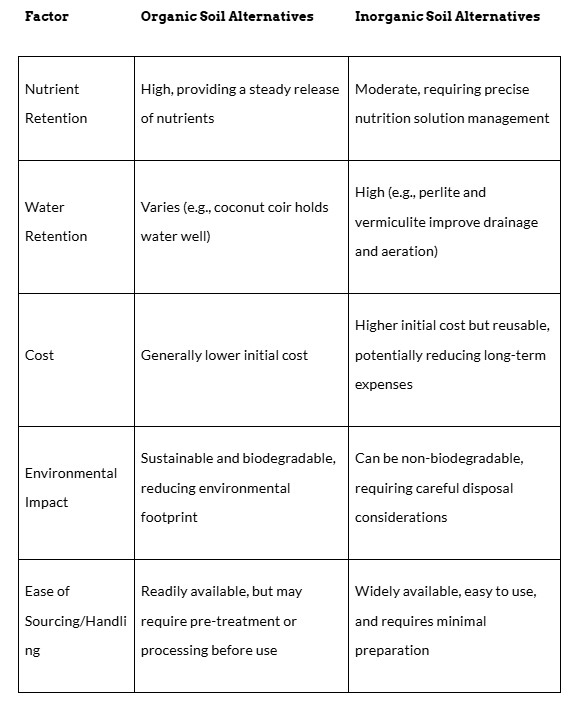

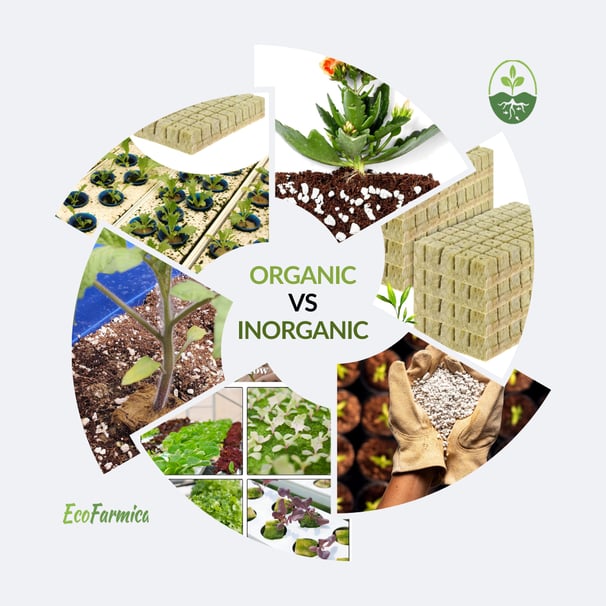

Case Study 1: South Africa - Township Food Security Project (Organic Focus)
Location: Cape Town, South Africa
Project: A community-based urban farming initiative aimed at improving food security and providing economic opportunities for residents.
System: Small-scale hydroponic systems set up in repurposed shipping containers and on rooftops.
Soil Alternative: Primarily utilizes coconut coir (organic) sourced locally from coconut processing plants. Small amounts of biochar made by local entrepreneurs from agricultural byproducts (corn stalks and husks).
Crop: Leafy greens (spinach, lettuce, kale) and herbs (basil, mint).
Benefits:
Sustainability: Using coconut coir supports local waste reduction efforts and promotes organic practices. Biochar helps to improve local soils.
Nutrient Richness: The slow release of nutrients from coconut coir and other organic soil alternatives contributed to healthier plant growth and improved nutritional content of the produce.
Community Empowerment: The project provided training and employment opportunities for residents, promoting self-sufficiency and economic development.
Challenges:
Nutrient Imbalance: Reliance on organic soil alternatives sometimes led to inconsistent nutrient levels, requiring careful monitoring and supplementation.
Water Management: Managing water retention in coconut coir required careful attention to prevent waterlogging, particularly during the rainy season.
Quote: "Hydroponics with organic soil alternatives has transformed our community, providing access to fresh, nutritious food and empowering us to create a sustainable livelihood." - Nandi, Project Coordinator
Case Study 2: Kenya - Commercial Hydroponic Farm (Inorganic Focus)
Location: Naivasha, Kenya
Project: A commercial hydroponic farm growing high-value vegetables for export.
System: Large-scale nutrient film technique (NFT) and deep water culture (DWC) systems.
Soil Alternative: Predominantly rockwool (inorganic) due to its consistent performance and ease of management. Vermiculite is also used to improve water retention.
Crop: Tomatoes, cucumbers, peppers, Leafy greens (spinach, lettuce, kale) and herbs (basil, mint).
Benefits:
Efficiency: Rockwool provided consistent nutrient delivery and pH levels, leading to predictable plant growth and high yields.
Cost-Effectiveness: The reusability of rockwool across multiple growing cycles reduced long-term operational costs.
Disease Control: The sterile nature of rockwool minimized the risk of soil-borne diseases, resulting in healthier plants and reduced pesticide use.
Challenges:
Environmental Concerns: The non-biodegradable nature of rockwool presented disposal challenges, requiring responsible waste management practices.
Initial Investment: The upfront cost of setting up the hydroponic system with rockwool and other inorganic soil alternatives was relatively high, requiring significant capital investment.
Quote: "Rockwool has enabled us to achieve consistent yields and maintain high-quality standards, making our hydroponic farm a successful and sustainable business." - Baraq, Farm Manager
Case Study 4: Netherlands - High-Tech Greenhouse (Mixed Approach)
Location: Westland Region, Netherlands
Project: A cutting-edge greenhouse operation focused on maximizing crop production while minimizing environmental impact.
System: Advanced hydroponic systems with climate control, automated nutrient delivery, and LED lighting.
Soil Alternative: A combination of organic and inorganic media. Coconut coir is used for its water-retention properties, and perlite/vermiculite are used to improve drainage and aeration.
Crop: Tomatoes, peppers, strawberries, Leafy greens (spinach, lettuce, kale) and herbs (basil, mint).
Benefits:
Optimized Growth Conditions: Controlled environment combined with strategic soil alternative use yields high product quantity and quality.
Sustainable Practices: Using renewable resources ensures sustainability efforts are implemented in the farm.
Challenges:
High Upfront Costs: Setting up and maintaining a large-scale greenhouse demands significant capital investment for automated systems and renewable energy.
Regulatory Compliance: Strict compliance with the government ensures that standards and practices are closely monitored.
Quote: "The mix of organic and inorganic media ensures we are compliant with strict regulations and can achieve optimum results." - Annika, Greenhouse Manager
Case Study 3: Nigeria - Backyard Hydroponics (Low-Cost, Organic)
Location: Lagos, Nigeria
Project: An initiative that supports individual households in setting up small hydroponic systems in their backyards, creating a network of home growers.
System: Small-scale Kratky (passive hydroponics) systems using repurposed containers.
Soil Alternative: Rice husks and composted organic waste (organic), locally sourced, inexpensive and readily available.
Crop: Leafy greens (spinach, lettuce) and herbs (basil, mint)
Benefits:
Food Security: Hydroponics provides households with affordable and accessible fresh produce.
Waste Reduction: Utilizes locally sourced and readily available organic materials such as rice husks and composted organic waste, reduces the need for purchasing external resources.
Challenges:
Limited Crop Selection: The local climate and growing conditions limit the variety of crops that can be successfully grown.
Knowledge Gap: There is a significant need for more local gardeners with experience in organic hydroponics to ensure the transfer of knowledge and maintenance of the equipment used.
Quote: "Backyard hydroponics allows us to grow our own food affordably, making a big difference for our families." - Aisha, Home Grower
Cultivating a Sustainable Future.
Get in Touch
Join EcoFarm Today!
baraq@ecofarmica.store
© 2025. Eco Farmica LLC. All rights reserved.
Connect, Learn, Grow!
